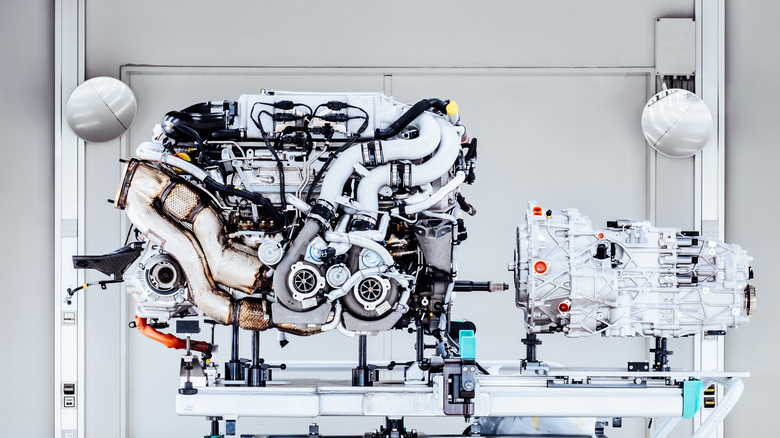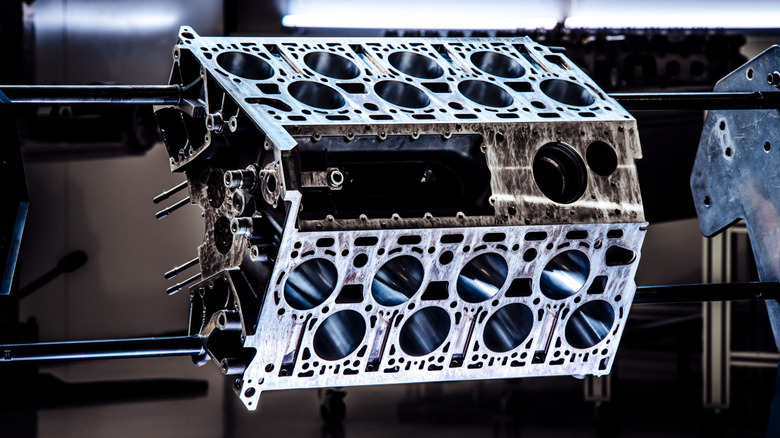Here's What Makes The Bugatti W16 Engine So Incredible
When Bugatti introduced its W16 engine in its Veyron supercar in 2005, it was the most powerful production car ever, and the first to crack the mythical four-figure horsepower barrier. 1,001 metric horsepower, to be exact, which equals 987 ponies by American standards. Making upwards of 1,000 horsepower in a racing engine might not be a big deal, but to do so in a road-legal car that needs to meet emissions standards — and be refined enough for Bugatti's luxury reputation — was no simple task.
To accomplish this feat and squeeze the finished product in the tight confines of the Veyron's engine bay, Bugatti's parent company Volkswagen essentially conjoined a pair of its eight-cylinder engines, based on a Volkswagen Passat's 4.0-liter WR8 engine with its narrow angle between cylinder banks. If you can picture two conventional V8 engines, nestled one on top of the other, and sharing one cylinder head per bank of eight cylinders and a common crankshaft, that's what Bugatti did.
Reportedly, this idea came to Volkswagen's then-chairman Ferdinand Piech while riding a bullet train in Japan, and was quickly transcribed onto an envelope. It seems that Piech, the grandson of Ferdinand Porsche, had a penchant for 16-cylinder engines since developing one for Porsche in the 1970s, which was never utilized.
It needed 15 gallons of water to stay cool
Bugatti's W16 displaced a whopping 8.0 liters, making it one of the largest contemporary production engines sold in the U.S., but size alone wasn't enough to push the Veyron to a 250 mph top speed. The W16 also sported a brace of four turbochargers producing a combined boost of 15.8 pounds in the initial design, pulling air through a pair of intercoolers.
As you might expect from such a gargantuan powerplant, cooling was a major concern for Bugatti engineers. The Veyron carried 10 radiators in total, continuously moving almost 15 gallons of water/coolant mixture throughout the vehicle. The exhaust system was no less impressive, built entirely from titanium. With other automakers starting to catch up in the horsepower wars, Bugatti turned up the W16's wick with larger turbochargers that delivered approximately 1,200 horsepower in the 2010 Veyron 16.4 Super Sport.
Later, a more comprehensive redesign of the powerplant would result in at least 1,500 horsepower for the Chiron — the successor to the Veyron. In 2019, a Super Sport iteration of the Chiron with nearly 1,600 horsepower became the first production car to break the 300 mph barrier, with a top speed of 304.773 mph.
Sadly, Bugatti announced the demise of the iconic W16 in 2022. For the next several years, the brand intends to focus on hybrid powertrains on its way to all-electric propulsion around the year 2030. Fittingly, Bugatti has invested in a joint venture with Croatian electric automaker Rimac, manufacturer of the Rimac Nevera, which is currently the second-fastest EV on the planet behind the Aspark Owl.

